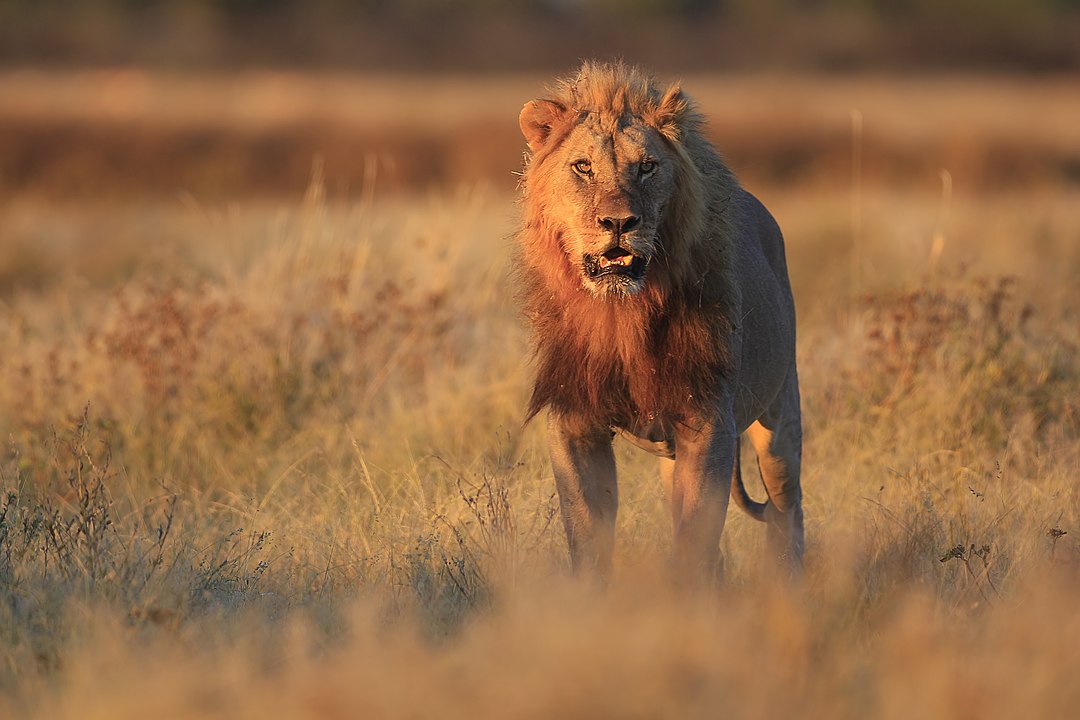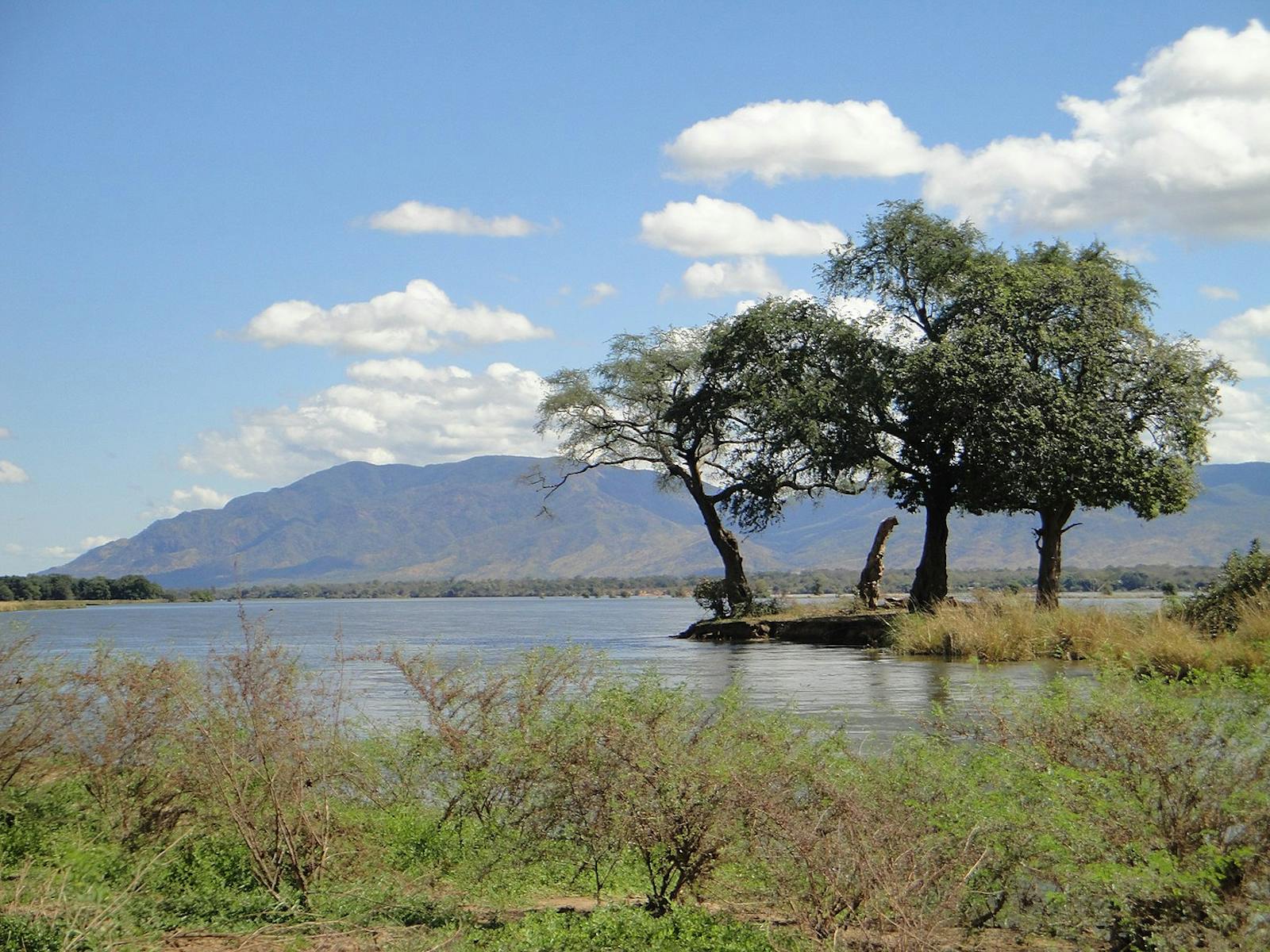Central Zambezian Wet Miombo Woodlands
The ecoregion’s land area is provided in units of 1,000 hectares. The conservation target is the Global Safety Net (GSN1) area for the given ecoregion. The protection level indicates the percentage of the GSN goal that is currently protected on a scale of 0-10. N/A means data is not available at this time.
Bioregion: Greater African Subequatorial Savannas & Mixed Woodlands (AT11)
Realm: Afrotropics
Ecoregion Size (1000 ha):
102,426
Ecoregion ID:
39
Conservation Target:
27%
Protection Level:
8
States: Angola, Burundi, Democratic Republic of Congo, Malawi, Tanzania, Zambia, Mozambique
Termites are abundant in this woody, biomass-rich habitat, and by concentrating organic matter and nutrients in their mounds, termites produce nutrient-rich patches within an otherwise nutrient-poor landscape. The poor soils and harsh dry season favor large-bodied generalist animals, including African bush elephants, African buffalo, and previously black rhinos. The ecoregion occupies the Central African Plateau at altitudes between 1,000 and 1,600 meters (3,280-5,249 ft), with a few localized areas of higher relief, such as Mount Mulumbe in the southern Democratic Republic of Congo.
%20portrait%20-%20Kruger%20National%20Park%20(South%20Africa)%20dreamstime_xxl_42758941%20(1).jpg)
The flagship species of the Central Zambezian Wet Miombo Woodlands ecoregion is the African buffalo (Syncerus caffer). Image Credit: Johan63, iStock.
The ecoregion covers about 70 percent of central and northern Zambia, the southeastern third of DRC, western Malawi, much of western Tanzania, and parts of Burundi and northeastern Angola. Valleys of major rivers such as the Limpopo, Zambezi, and Shire, as well as the upper Congo River drainage, dissect the plateau. Over tens of millions of years, they have been eroded and weathered into a low-relief peneplain, with inselbergs projecting from the surface. Rainfall is unimodal, concentrated during the hottest months of November through March/April.
A pronounced drought occupies the cooler season, lasting up to 7 months. Rainfall is typically between 1,000 and 1,200 millimeters (39-47 in) annually, with up to 1,400 millimeters (55 in) falling at higher elevations. Mean maximum temperatures range between 24–27°C (75-81°F), depending on altitude. Mean minimum temperatures range from 9° to 18°C (48-64°F).
Trees of the legume subfamily Caesalpinioideae, particularly from the genera Brachystegia, Julbernardia, and Isoberlina, dominate. Frequent canopy dominants of the miombo tree species include Brachystegia floribunda, B. glaberrima, B. taxifolia, Julbernardia globiflora, J. Paniculata, and Isoberlina angolensis.
.jpg)
African wild dogs (Lycaon pictus). Image Credit: Philippe Demande, Almay.
This ecoregion is a part of the Zambezian regional center of endemism and has the highest floral richness of the African miombo ecoregions, with the peak of miombo plant species richness in Zambia. The ecoregion may support over 3,000 plant species, with perhaps several hundred endemics, including members from the genera Crotalaria, Indigofera, and Brachystgia.
There is a low density of large mammals, attributed to the harsh dry season, long droughts, and poor soils, which results in vegetation of low nutrient content – ideal conditions for elephant and African buffalo. Other species make more use of non-miombo habitats, including sable antelope, roan antelope, Lichtenstein’s hartebeest, and southern reedbuck. Rates of mammal endemism are low, with three strict endemics: Rosevear's striped grass mouse and two white-toothed shrews, Ansell’s shrew and Upemba shrew. Threatened species include lions, cheetahs, and African wild dogs. The only strict avifauna endemics are Ruwet’s masked weaver and black-faced waxbill.
.jpg)
A small black-faced waxbill (Estrilda erythronotos) perched on a branch in South Africa. Image Credit: EcoPic, DepositPhotos.
Throughout the ecoregion, stands of pristine miombo have been cleared or heavily modified in the past and then regenerated. The ecoregion has an extensive protected areas network and of the national parks, two are particularly important: Kafue in Zambia and Upemba National Park in southern DRC. Lufira Biosphere is a newly appointed Biosphere Reserve in DRC. Other national parks include Nyika and Kasungu in Malawi, and Mahale Mts. In Tanzania and Lusenga Plain in Zambia. There are no protected areas in Angola.
Cutting woody vegetation for the production of charcoal, especially close to major roads and large urban centers, is having a marked impact. Large-scale cultivation is uncommon, but subsistence agriculture is practiced by most of the population. Growing staple and cash crops such as maize, cassava, sorghum, millet, and tobacco has converted significant areas.

African lion (Panthera leo). Image Credit: Yathin S Krishnappa, Wiki Creative Commons.
Growing tobacco for export has led to large losses of miombo in Tanzania and Malawi for both cultivation and fuelwood. In Zambia, “citimene,” a traditional form of ash-fertilizing agriculture, is also practiced, and increased human populations mean that this is no longer sustainable. Although fire is an integral part of miombo ecology, the human setting of fires is believed to have increased the frequency of fire far above the natural level. Repeated late-season fires in many areas have decreased forest regeneration, seed germination, and seedling survival growth can be severely disturbed.
Poaching and illegal hunting for bushmeat have a significant impact on the wildlife throughout the ecoregion. Elephant and rhino poaching, in particular, have been extremely severe. The live animal trade in Tanzania is one of the biggest in Africa, especially in birds, reptiles, and tortoises.
The priority conservation actions for the next decade
1) Promote and support the introduction of locally produced renewable energy, for example, bio-energy, solar energy, and wind
2) Support and build capacity for community-based natural resource programs.
3) Increase livestock production to reduce the price of domestic meat whilst at the same time increasing protection of protected areas through ground enforcement in order to reduce poaching.
-
-
1. Burgess, N., Hales, J.A., Underwood, E., Dinerstein, E., Olson, D., Itoua, I., Schipper, J., Ricketts, T. and Newman, K. 2004. Terrestrial ecoregions of Africa and Madagascar: a conservation assessment. Island Press.
2. World Wide Fund for Nature. 2012. Miombo Eco-region ”Home of the Zambezi” Conservation Strategy: 2011-2020. Harare, Zimbabwe: World Wide Fund for Nature.
3. Martin, A., Caro, T. and Mulder, M.B. 2012. Bushmeat consumption in western Tanzania: a comparative analysis from the same ecosystem. Tropical Conservation Science. 5(3), pp.352-364.
4. Frost, P.G.H., Timberlake, J.R. and Chidumayo, E. 2002. Miombo-mopane woodlands and grasslands. Wilderness: Earth’s last wild places. pp.183-204. -
Cite this page: Central Zambezian Wet Miombo Woodlands. Ecoregion Snapshots: Descriptive Abstracts of the Terrestrial Ecoregions of the World, 2021. Developed by One Earth and RESOLVE. https://www.oneearth.org/ecoregions/central-zambezian-wet-miombo-woodlands/
-





